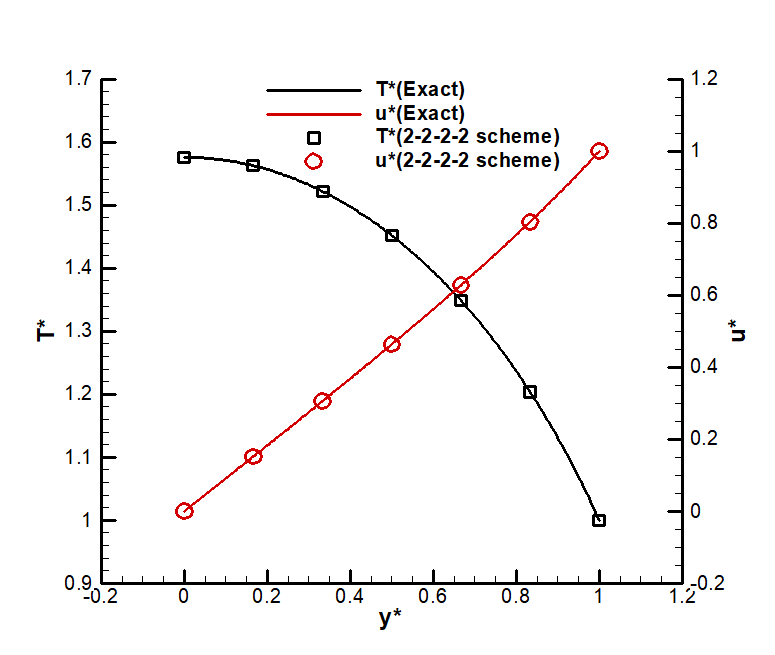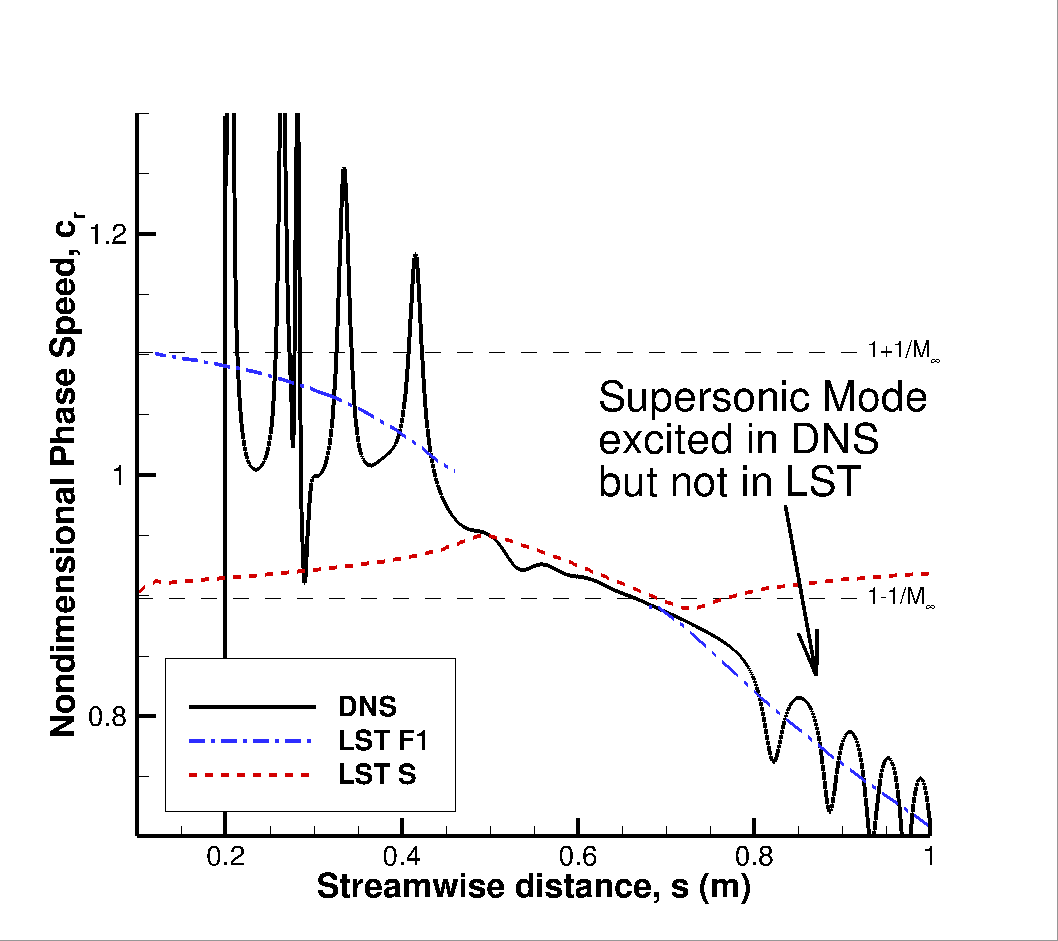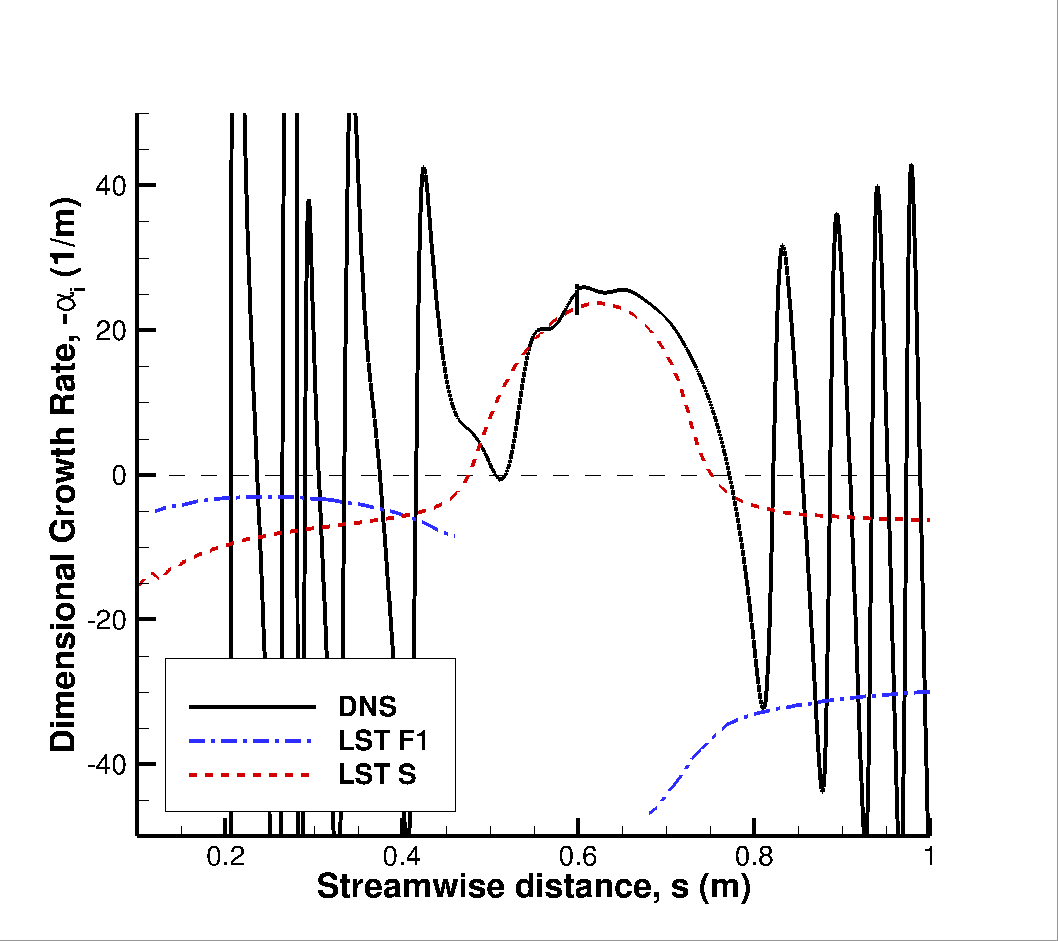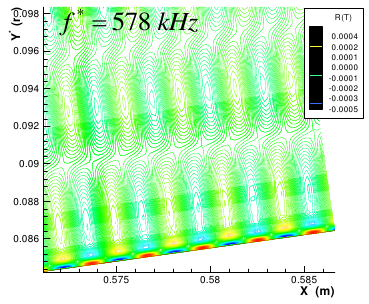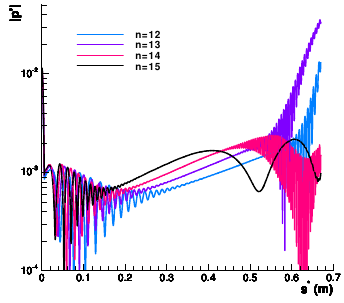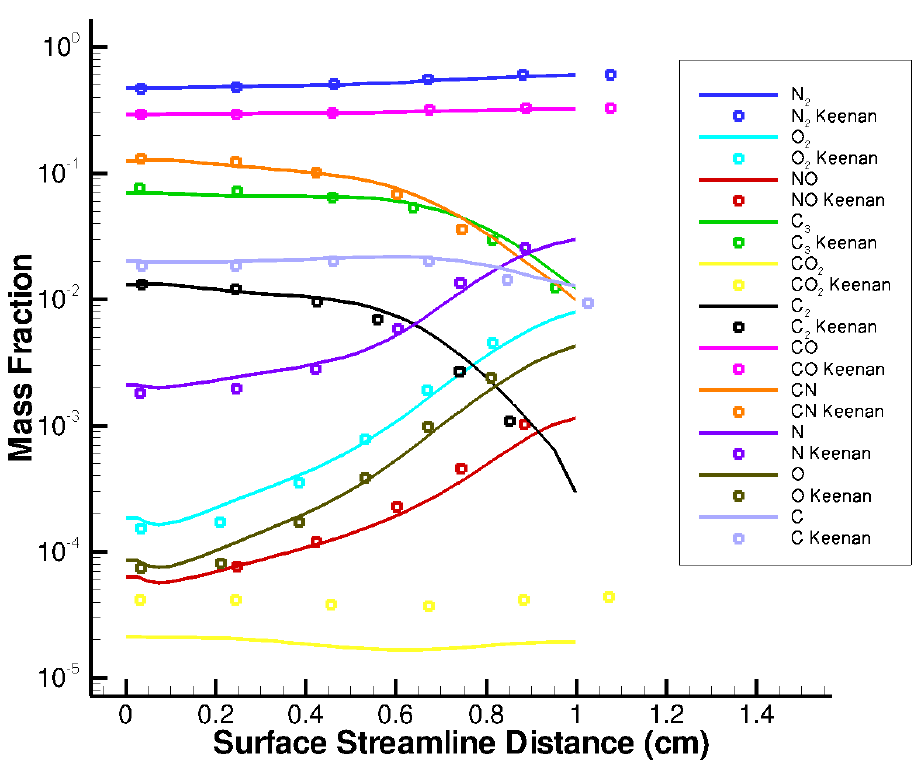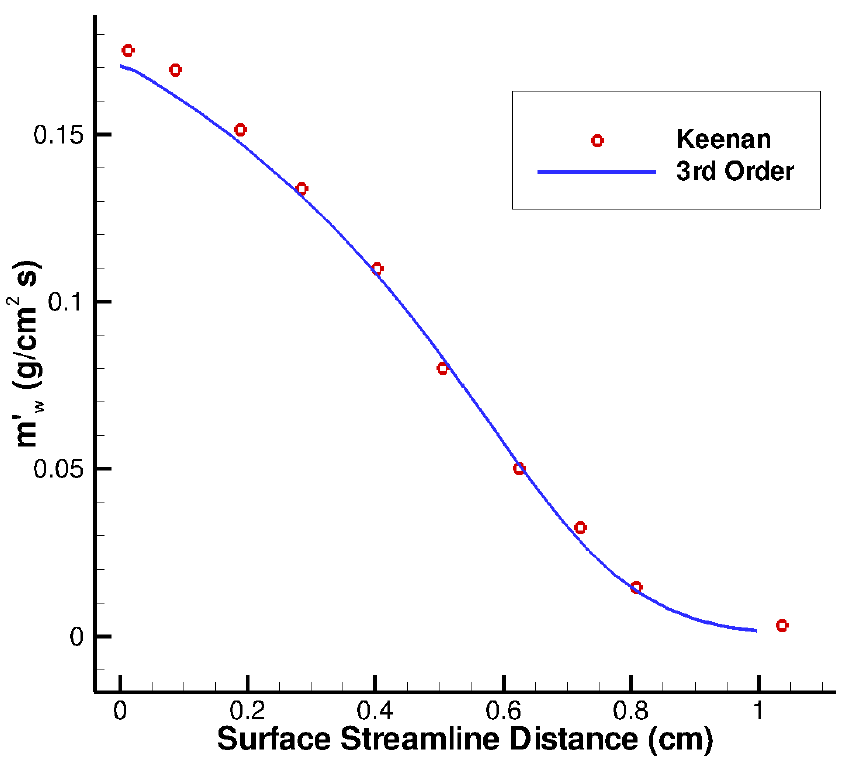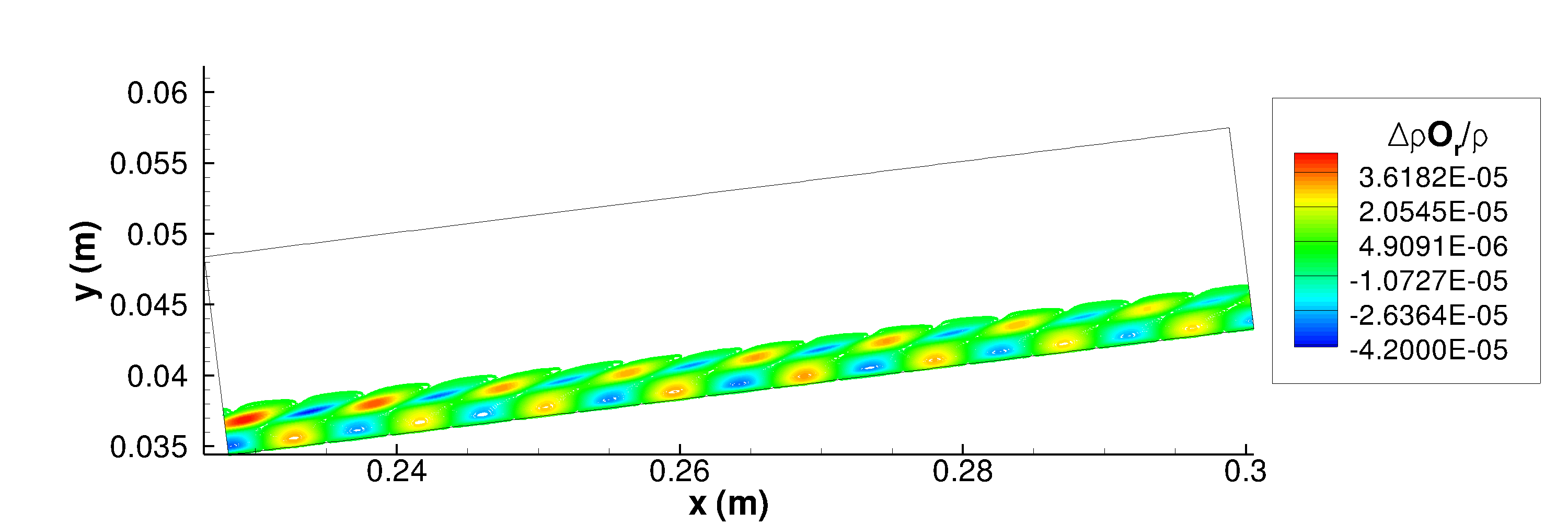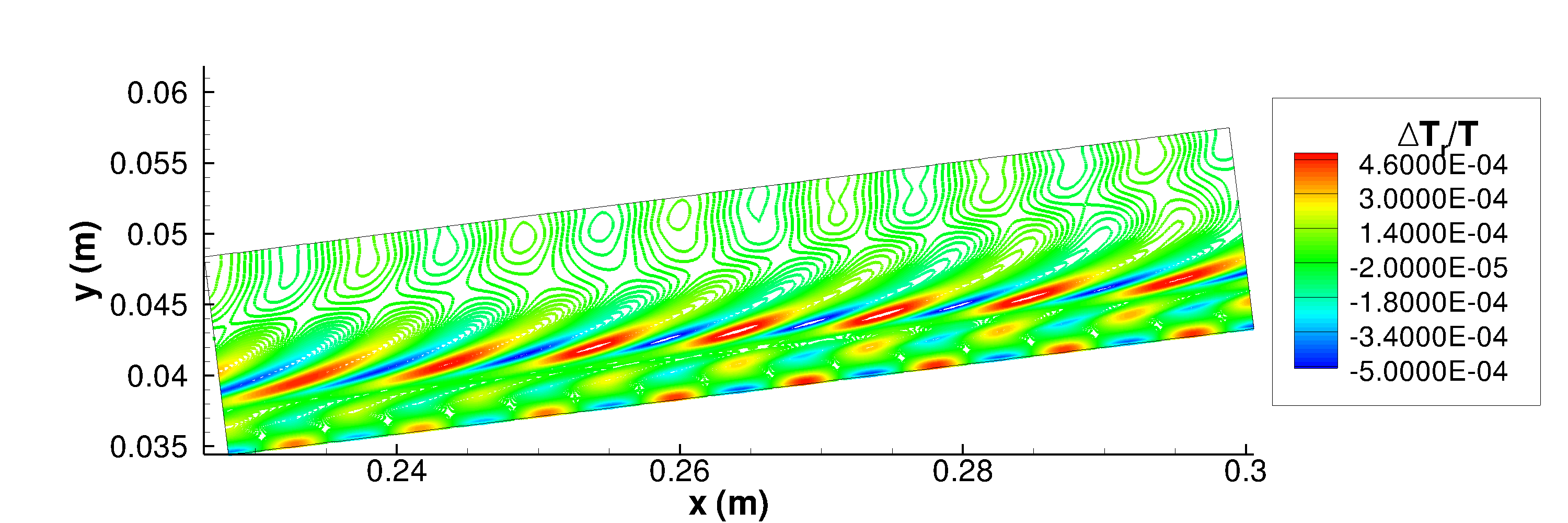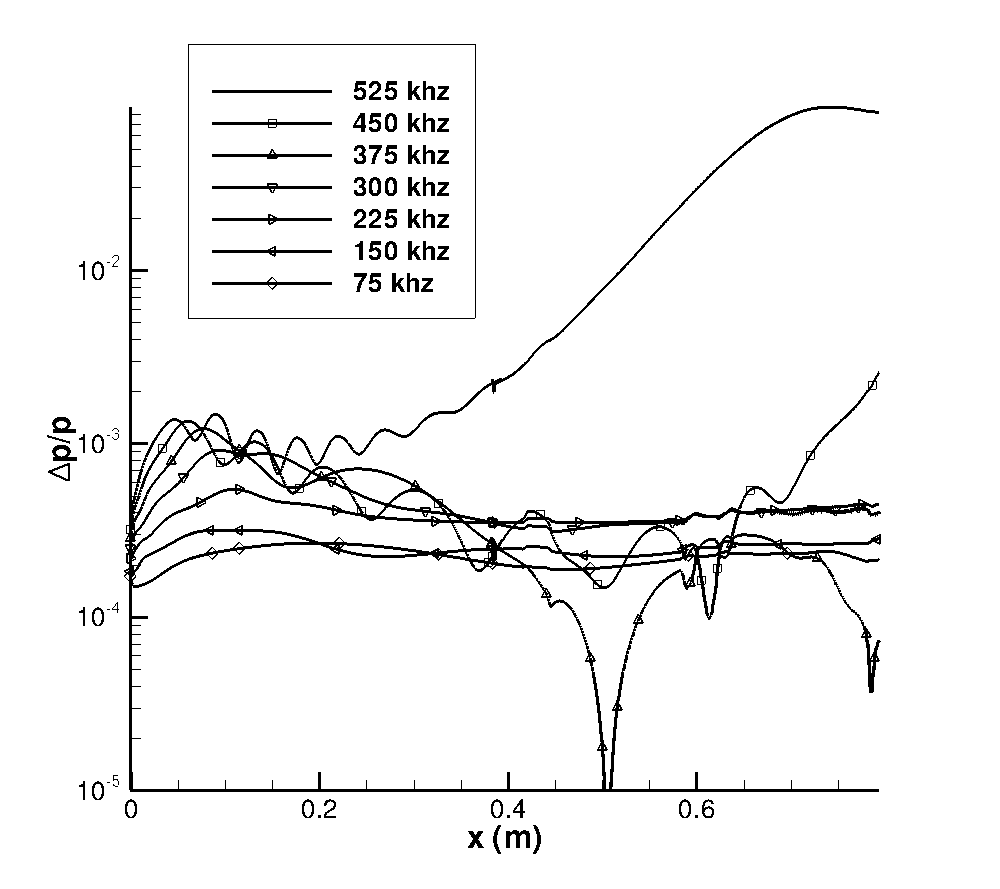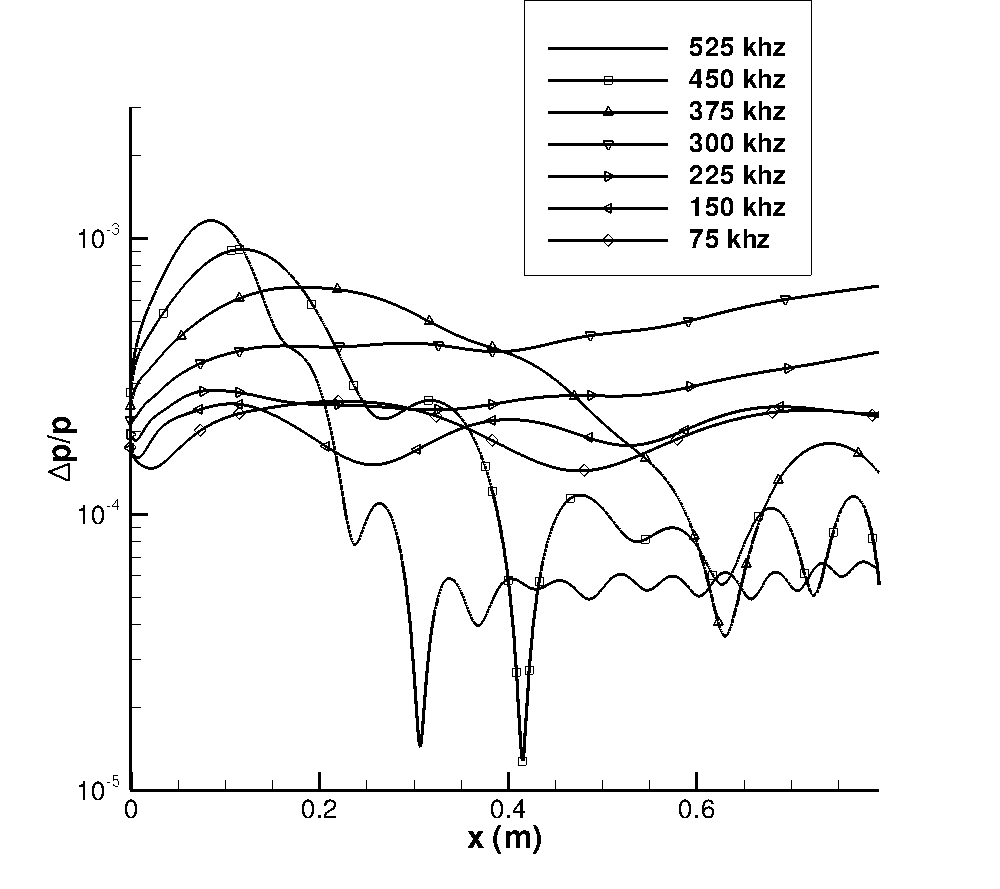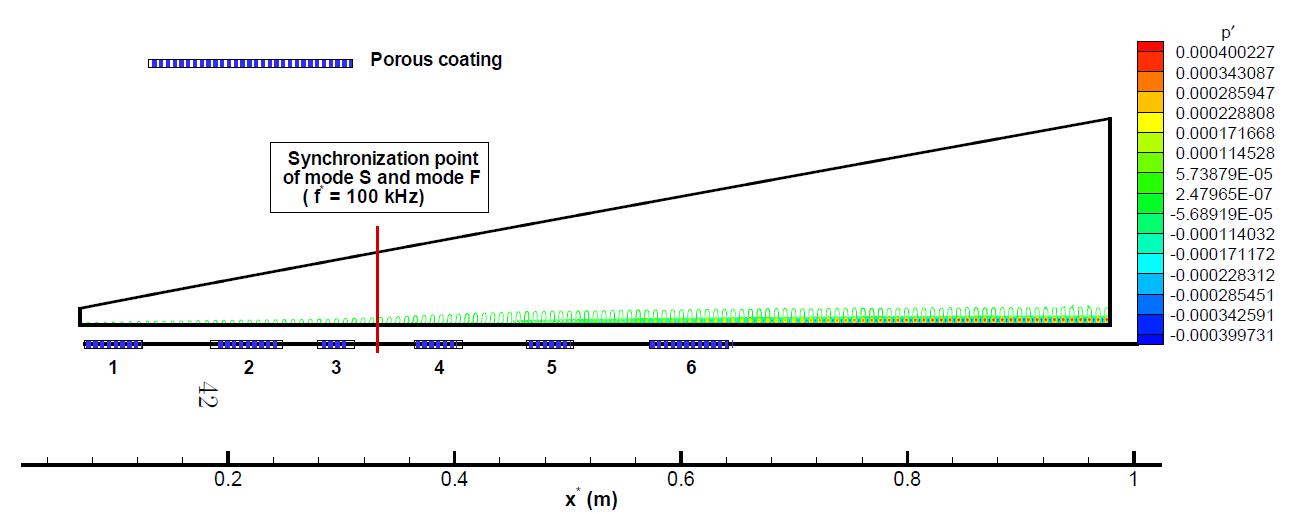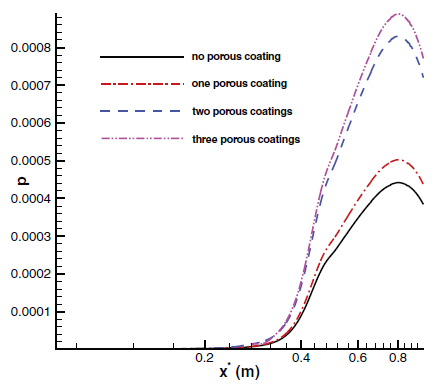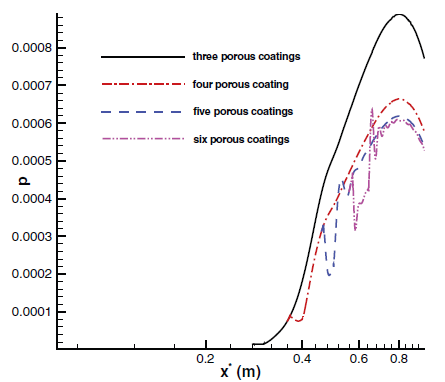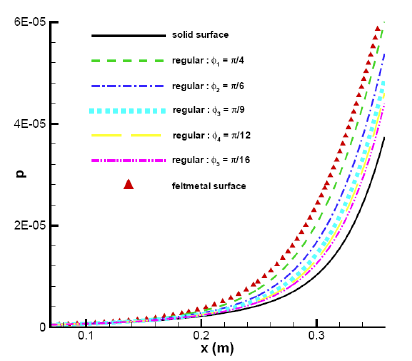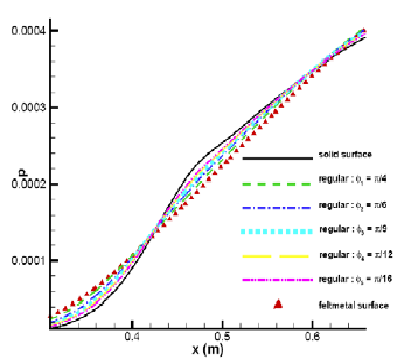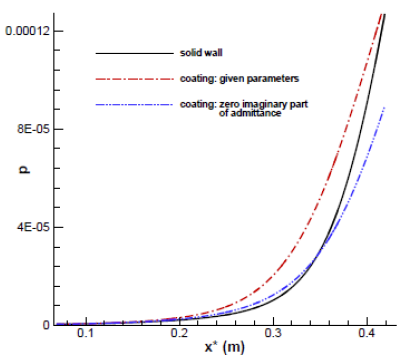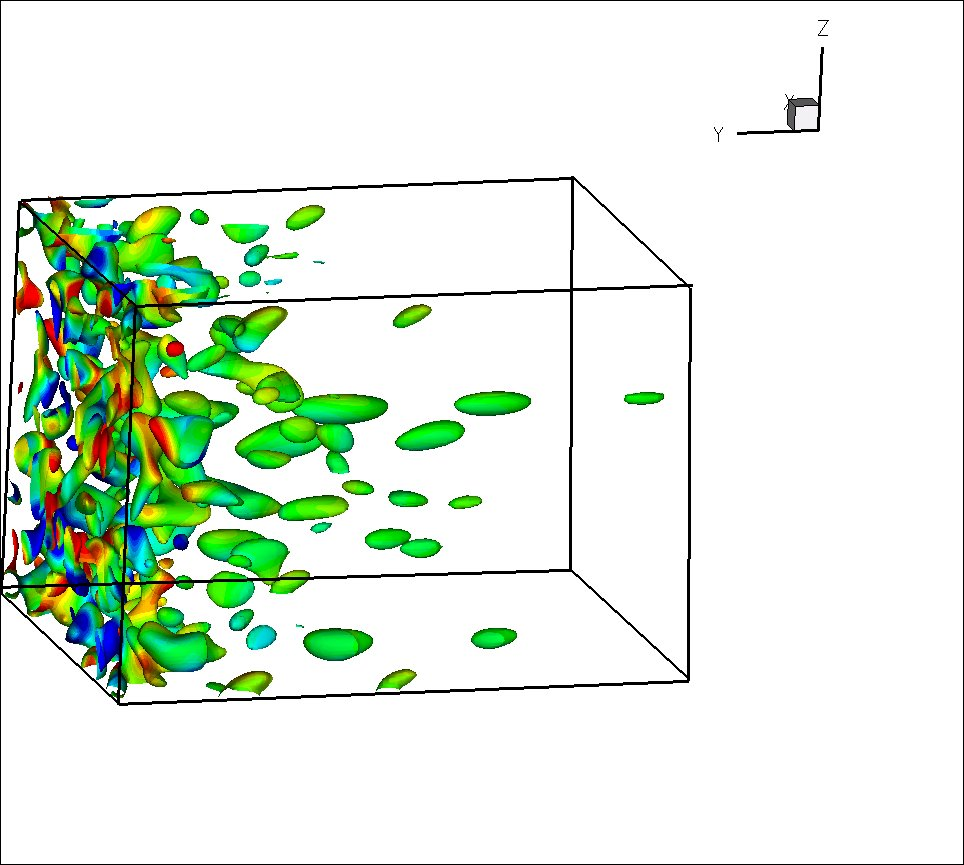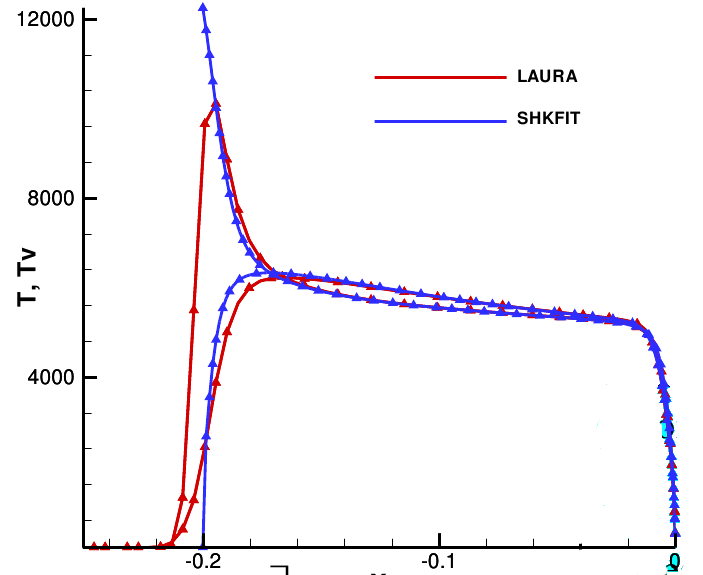Current Research Topics
Past Research Topics
Attenuation of Hypersonic Second Mode Instability with Discrete Surface Roughness on Straight Blunt Cones
Summary
- The 'roughness effect' is a counterintuitive phenomenon wherein Mack's second-mode instability can be damped with surface roughness immersed within the hypersonic boundary layer and judiciously placed at the synchronization location of a desired cut-off frequency.
- Frequencies higher than the cut-off frequency are attenuated, while lower frequencies are amplified.
- Research on the roughness effect is limited to 2-D flat plate geometries and lower Mach numbers. This theortical and computational investigation extends the research to higher Mach conical flow fields.
- Cones are common test articles in hypersonic research. The axisymmetric geometry is better suited to high Mach number shock tubes and blow-down wind tunnels.
- The investigation also seeks to study the long-term downstream growth of second-mode frequencies amplified by the roughness effect.
|
Very High-Order Multi-Layer Compact (MLC) Schemes with Spectral-Like Resolution
Summary
- The MLC scheme is designed for solving complex flows with multiple temporal and spatial scales, such as hypersonic boundary layers, computational aeroacoustics, turbulence, etc.
- The multi-layer framework leads to both very high-order accuracy and good spectral resolution within a compact stencil
- The directional MLC (DMLC) scheme and the weighted least-square MLC scheme improve performance in multi-dimensional flow simulations
|
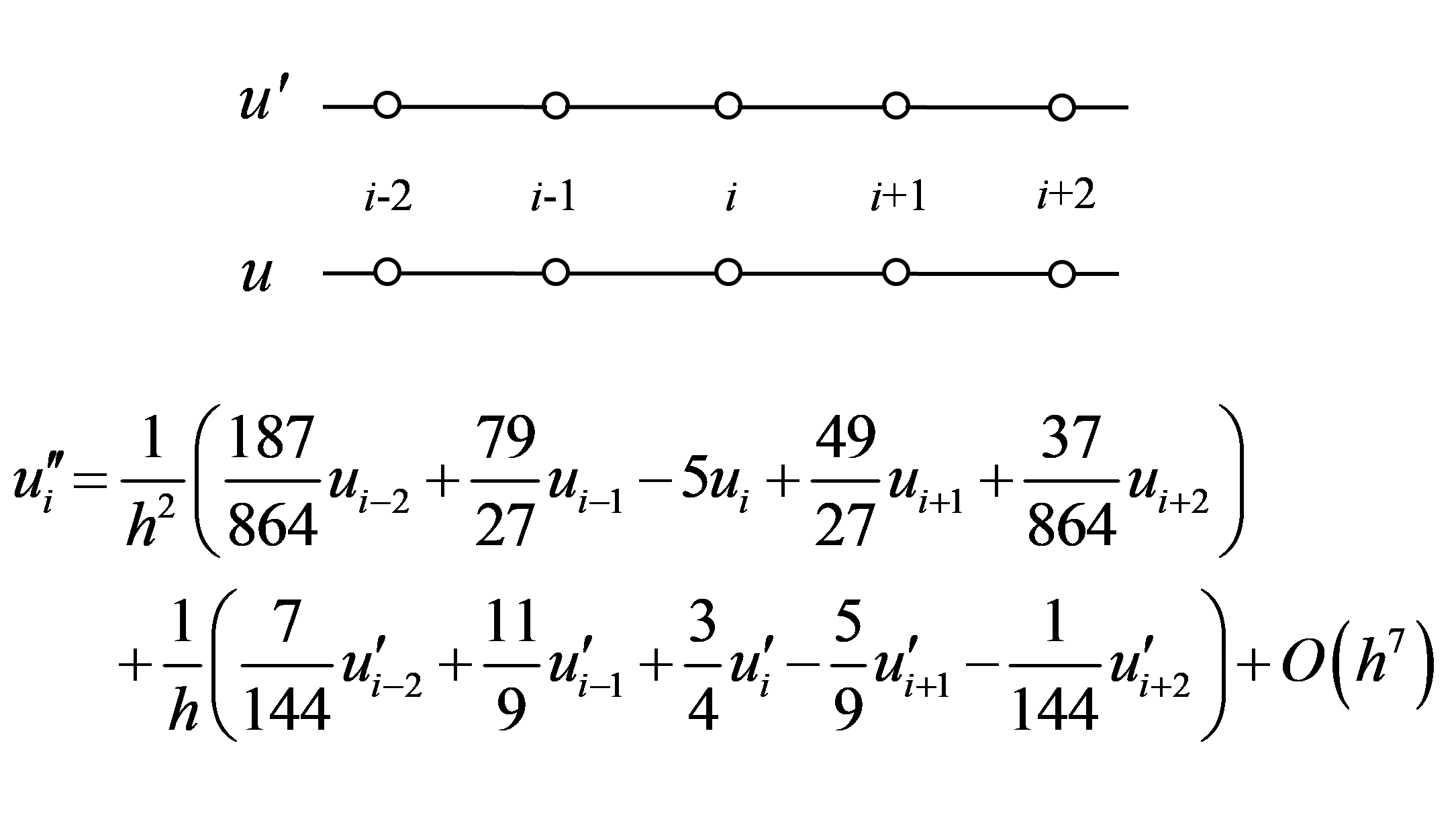
Grid stencil and formula of the 7th-order MLC scheme |
Scheme Accuracy and Comparison
Left: Steady Couette flow simulation: temperature and velocity distribution with the seventh-order MLC scheme using 6 grid points. Right: 2-D isentropic vortex simulation: comparison of vorticity distribution along the vortex centerline using different schemes
Supersonic Unstable Modes in Hypersonic Boundary Layers with Thermochemical Nonequilibrium Effects
Summary of Supersonic Mode
- Supersonic mode occurs when a disturbance propagates upstream supersonically w.r.t. the local mean flow
- Causes “Mach wave” like disturbances that are actually a form of sound radiation away from the boundary layer
- Sound radiation can be difficult to capture in traditional stability solvers like LST - requires special boundary conditions
- Supersonic modes have until recently thought to be negligible due to smaller amplification than Mack’s 2nd mode (the dominant instability mechanism in hypersonic flow)
- Recent results show supersonic modes in unexpected conditions with comparable or larger amplification than the 2nd mode
- Warrants revisiting conditions leading to supersonic mode and reevaluation of the mechanism of its creation
- Recent results show the supersonic mode can be created via a nonlinear modal interaction that is not accounted for in most LST solvers
- Requires combined LST and DNS (or other nonlinear stability technique) to study the supersonic mode accurately
Objectives
- Verify our thermochemical nonequilibrium Direct Numerical Simulation (DNS) and Linear Stability Theory (LST) tools are capable of capturing the supersonic mode
- Show supersonic mode exists in conical flow in addition to flat plate
- Development of LST shock boundary conditions
- Determine envelope of conditions leading to supersonic mode
- Mach number, wall temperature, nose bluntness, real gas effects, etc.
- Develop theoretical mechanism of supersonic mode creation
- Linear synchronization vs. nonlinear modal interactions
- Assess the supersonic mode’s impact on transition to turbulence
Direct Numerical Simulation Results
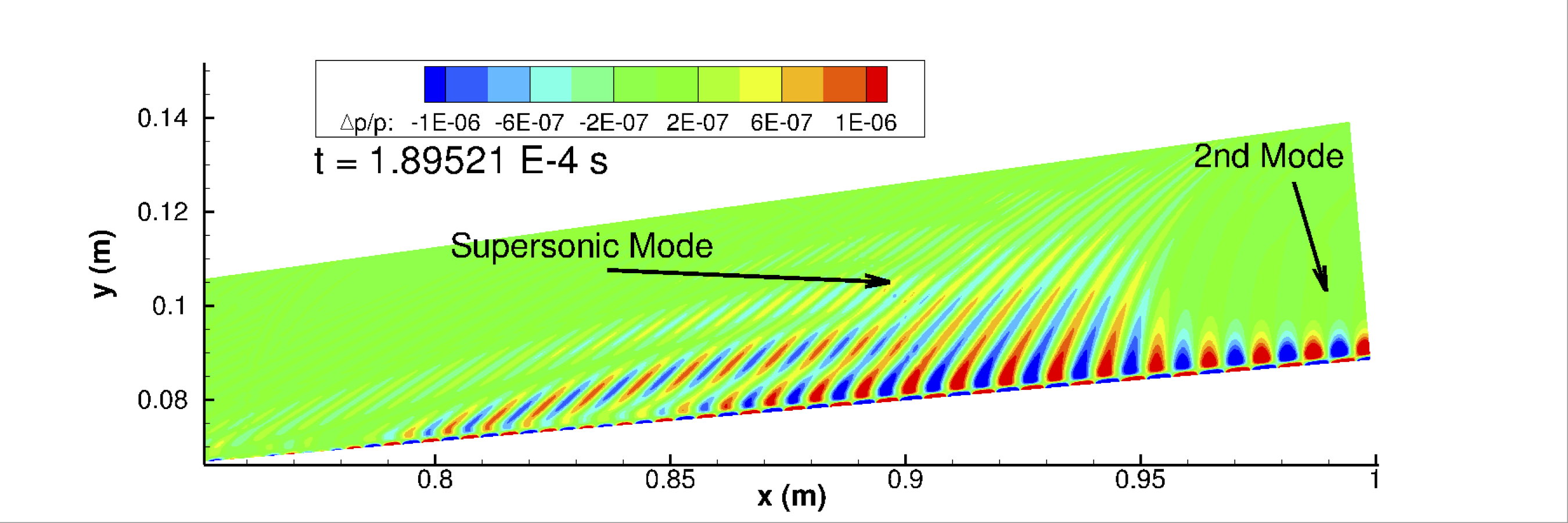
Instantaneous pressure pertubation featuring supersonic mode and Mack's 2nd mode resulting from broadband forcing
Linear stability theory (LST) analysis and direct numerical simulation (DNS) results of the phase speed (left) and growth rate (right) exhibiting the supersonic mode
Investigation of 3-D Bluntness Effects on Hypersonic Transition
Investigation of Nose Bluntness Effects on Supersonic Modes
Simulation of a Compression Cone with a Freestream Impulsive Entropy Spot in Mach 6 Freestream
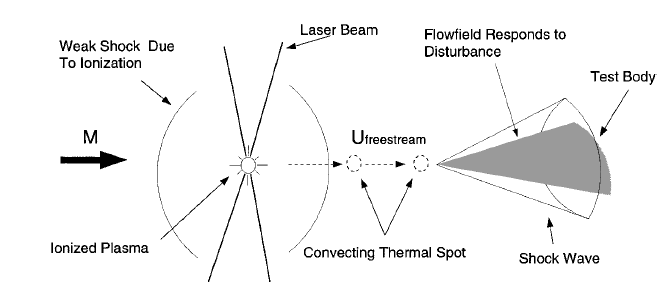 |
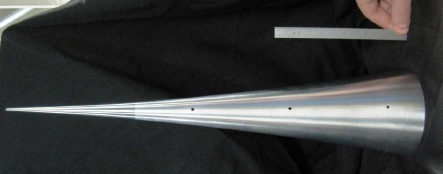 |
| Entropy spot diagram |
Compression cone |
Objectives
- Development of computer code for simulating the interaction of a freestream hotspot with the bow shock and the boundary layer in high order of accuracy
- Simulation of the hotspot perturbed shock layer on compression cone under the effect of a freestream hotspot
- Analysis and investigation on the receptivity and instability growth of hotspot perturbed boundary layer based on the simulation results
- Comparison of numerical results with those obtained by Professor Schneider’s group in the Purdue Mach-6 quiet tunnel
Mean Flow for Compression Cone Cases
Freestream Flow Conditions
- M = 6.0
- T = 52.8 K
- P = 610.8 Pa
- Twall = 300 K
- Re_u = 1.026e7 1/m
|
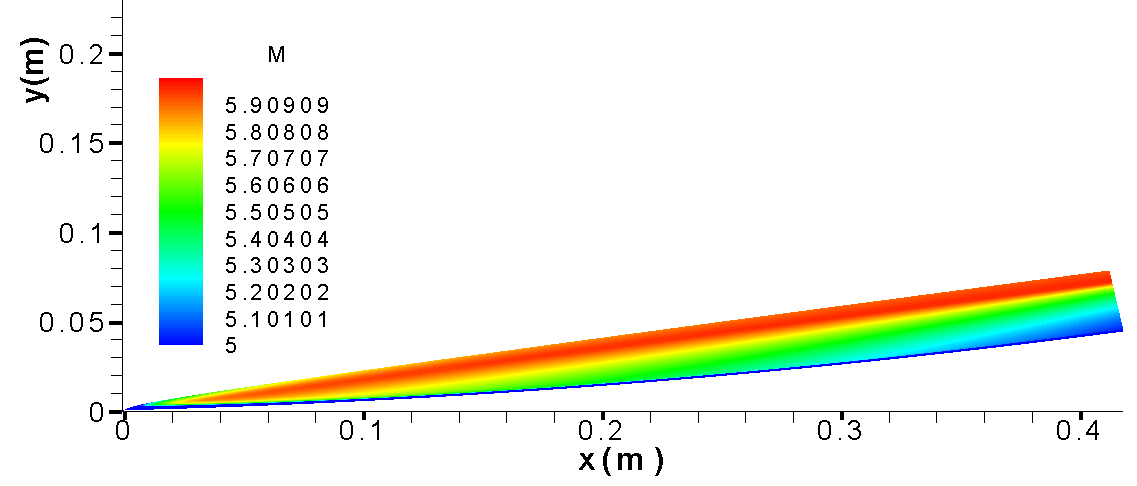 |
Geometrical parameters
- R_flared = 3.0 m
- cone half-angle = 2.0 deg
- cone length = 0.45 m
- grid resolution = 3720 x 240
- R=0.001 m
|
 |
Numerical Study of Hypersonic Boundary Layer Instability Affected by 2D Surface Roughness
Objectives
- Our goal is to utilize numerical simulation to study the role of roughness on the stability of a hypersonic boundary layer, mainly focus on roughness effect on transition
- In the current project, we consider 2D roughness on a hypersonic flat plate at Mach 5.92
- The roughness is modeled as a hump and is treated by a high order cut cell method
- Pure mode S (slow acoustic wave), mode F (fast acoustic wave) perturbation at 100KHz, and wall normal velocity pulse which has a frequency range 1MHz are imposed into the mean flow separately
- The evolution of disturbance on the wall due to different roughness height and locations are studied using FFT
 |
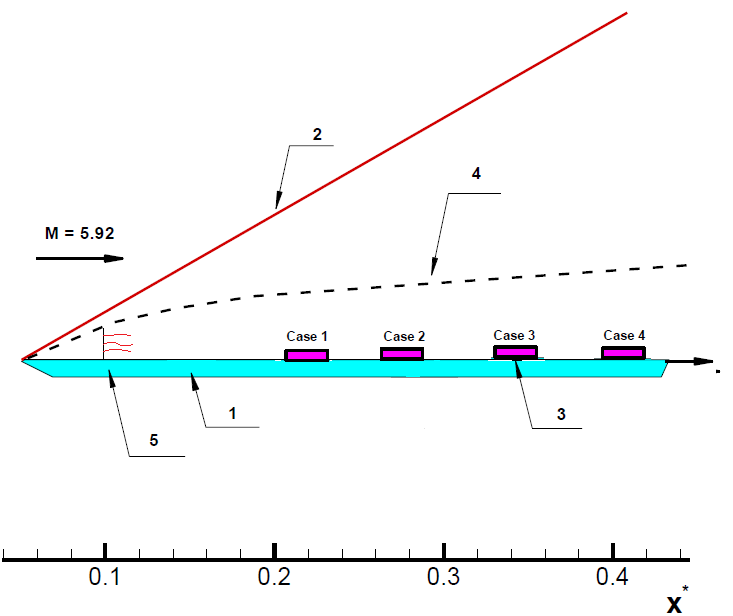 |
| Discrete roughness element |
Four separate computational cases with one roughness element |
FFT results for 100 khz slow acoustic disturbance (Mode S) with different roughness heights
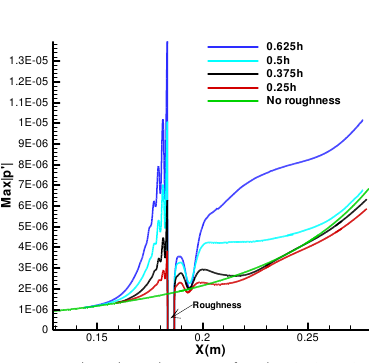 |
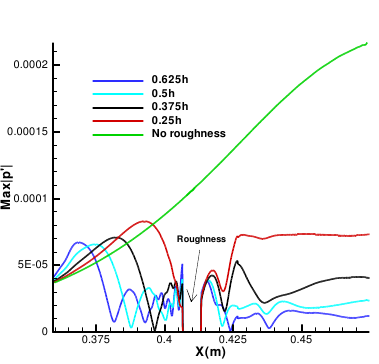 |
| Roughness located upstream of synchronization point |
Roughness located downstream of synchronization point |
- Upstream of synchronization point, roughness amplifies disturbance
- The overall amplification of disturbance depends roughness height
- However, when roughness is placed downstream of synchronization
point, it damps disturbance with strength related to roughness height
Freestream waves receptivity to nonlinear breakdown over Mach 5.5 circular cone
Objectives
- develop a direct numerical simulation code to simulate hypersonic boundary layer flow from laminar to nonlinear breakdown in transition over blunt circular cone
- build a linear receptivity database for different types of freestream waves with a selected frequency specturm
- construct the inflow condition for subsequent nonlinear region using receptivity database and conduct the breakdown simulation

Linear receptivity simulations were conducted to obtain freestream waves database. The database were used as entrance conditions for subsequent nonlinear breakdown simulations.
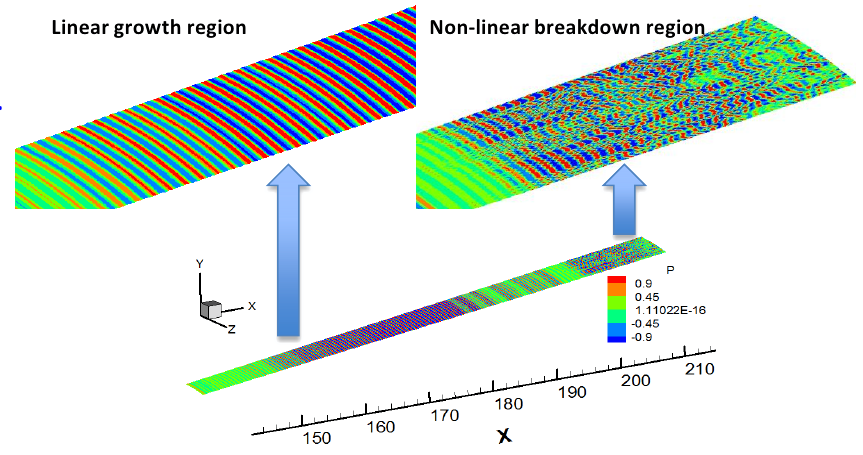
3D nonlinear breakdown simulation: pressure disturbances contour at wall surface
Numerical Study of Wave-Energy Extraction Device with Electroactive Polymer
Objectives
- Collaborate with the Soft Material Research Laboratory of Prof. Pei (UCLA) to develop technology using electroactive polymer to extract and convert wave energy to electricity
- Implement a finite volume method with free-surface tracking done by Volume of Fluid method to simulate the dynamic interaction between energy-containing incident wave and the energy extracting device
- In preliminary numerical study, the targeted strain of 20 to 30 percent was achieved, suggesting dielectric elastomer may be practical for large-scale power generation
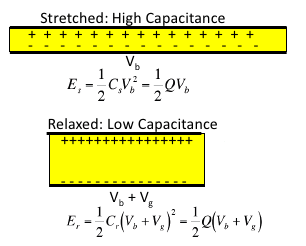
Change from high to low capacitance state raises the potential of the charge of the film
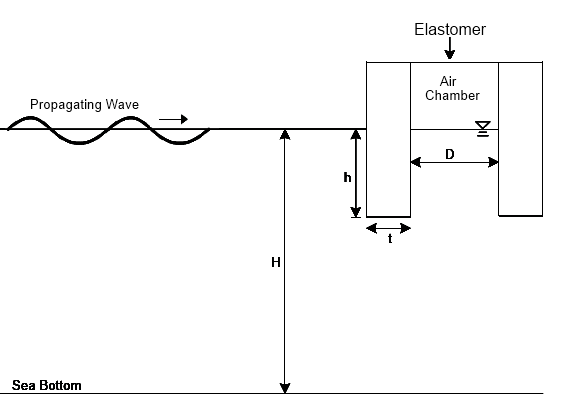
Schematic of numerical wave tank
Effects of Graphite Ablation Induced Outgassing on Hypersonic Boundary Layer Stability
Objectives
- Study effects of graphite ablation on the receptivity process and linear growth of Mack's first and second modes in a high speed boundary layer
- Surface chemistry model to approximate ablation includes oxidation, recombination of atomic oxygen and sublimation of C_3, C_2 and C
- Develop nonequilibrium LST code for ablation gas model and compare stability results to DNS
Direct Numerical Simulation Code Validation
11 species ablation code validation to Keenan's computations. Left: surface mass fractions. Right: surface mass flux.

Surface chemistry model comparison
Direct Numerical Simulation Results
Instantaneous snapshot of oxygen (O2) and translation-rotation temperature perturbation with 550 khz freestream fast acoustic forcing waves
Wall pressure perturbation amplitude for real gas simulation with ablation (left) and ideal gas simulation (right). Real gas flow is unstable while ideal gas is stable. Significant difference is shown between the two gas models.
Efficient Control of Hypersonic Boundary Layer Transition Using Surface Porous Coating
Motivations
- Porous coating significantly stabilizes Mack’s second mode (acoustics) whereas it moderately destabilizes the first mode (T-S wave)
- In previous studies, porous coating covers either the entire flat plate or the surface around half the cone circumference
- No work is reported on the effect of porous coating location on the first-mode destabilization, and how to increase stabilization efficiency of porous coating
 |
 |
| Felt metal coating | Regular porous coating |
Conclusions -- There are three approaches to increase the stabilization efficiency of porous coating
- Put porous coating downstream of the synchronization point
- Use regular porous coating if one must put porous coating along the whole surface
- Design new porous coating of smaller admittance phase angle to attenuate first mode destabilization
Direct Numerical Simulation of Strong Shock and Turbulence Interaction Using Shock-Fitting Methods
Objectives
- To conduct extensive DNS studies on strong shock and turbulence interactions for perfect gas flow with mean Mach numbers ranging from 2 to 30
- To validate our new 3-D high-order shock-fitting code for non-equilibrium flow
- To conduct DNS studies on strong shock and turbulence interactions for non-equilibrium flow
Conclusions
- Increasing shock-strength reduces the shock deformation
- The trend of maximum values of streamwise vorticity fluctuations versus shock Mach number reverses at M1 = 2.8 from increase to decrease
- The trend of maximum values of Reynolds stress R11 versus shock Mach number reverses at M1 = 8.8 from decrease to increase
Development and validation of new high order numerical method for hypersonic nonequilibrium flow simulations
Objectives
- Develop and validate new high-order shock-fitting numerical method for hypersonic nonequilibrium flow simulations
- Conduct numerical simulation studies on transient growth of re-entry vehicles, including the effects of small/finite surface roughness, the interaction of surface roughness and freestram disturbances
- Update and validation of the code with more advanced 5-species models and the more realistic 11-species air models are ongoing
- The simulation of the steady flow over 9-degree half-angle cone shows that real gas effects have significant impacts on flow fields
Motivations
- Receptivity studies have focused more on freestream disturbances than on wall disturbances.
- Wall disturbances, together with freestream disturbances, are the main disturbances that hypersonic vehicles experience under the real flight conditions.
- Blowing–suction is not only the most sensitive wall disturbance for hypersonic boundary layers, but is also widely used to control the boundary-layer transition.
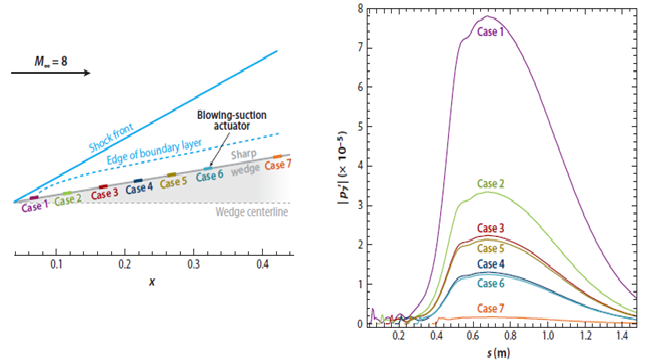
Mode S is strongly excited only when the blowing-suction actuator is upstream of the synchronization point. When the blowing-suction actuator is downstream of the synchronization point (Case 7), there is very little excitation of mode S, despite the fact the actuator is still located within the unstable region of mode S.
Conclusions
- The synchronization point of mode F and mode S played an important role in the excitation of mode S.
- To excite strong mode S at a specific frequency, it is necessary to place the blowing–suction actuator upstream of the corresponding synchronization point.
- New control strategy of hypersonic boundary-layer transition can be developed based on such results.


